Chronic headaches are one of the most common types of chronic pain in children, along with abdominal pain and muscoskeletal pain, and cause significant distress to both the child and parent. Chronic pain is any pain that lasts longer than 6 weeks.
While chronic pain is commonly acknowledged among adults, there are still many myths and misunderstandings around its occurrence in children and teenagers. For example, the belief that any pains a child might experience are simply “growing pains”.
Headaches that occur roughly 15 days per month or more in children are classified as chronic headaches. For the most part – about 99% of the time - stress, dehydration, poor sleep or a treatable infection are the cause.
When to seek urgent medical help for children’s headaches
When headaches are chronic, have a sudden onset, there has been a concussion, or increasing pain levels, seek urgent medical help, and consider seeing a specialist thereafter.
How do paediatric headaches present?
Paediatric headaches may be primary (the headache is the main symptom) or secondary (caused by another underlying problem), which may be more serious.
Primary headaches usually take the form of either migraines, tension headaches, or cluster headaches.
Migraine symptoms
· Can present differently among individuals
· May begin around age 7 in boys and age 10 in girls
· May be genetic
· Common in teenagers
· Particularly common in teenage girls
· Migraines in adolescent girls (and women) may correlate with menstrual periods or the days of pre-menstruation
· Pain on one or both sides of the head (some younger children may complain of pain all over)
· Throbbing or pounding pain
· Nausea and/or vomiting
· Sensitivity to sound, light and smells
· Sweating
· Abdominal discomfort
· Child may become quiet or pale
· Aura (change in vision or strange smells before onset)
· Migraine headaches are quite common in teenagers but are usually not chronic
Tension headache symptoms
· The most common headache type
· Often brought on by emotional distress
· Slow onset
· Pain on both sides of head
· Pain may present in neck
· Pain may feel like a band around the head
· Mild to moderate, dull pain (not severe)
· May cause sleep disturbances
Cluster headache symptoms
· The least common of the three primary chronic headaches
· Severe pain at side of head, usually behind one eye
· Affected eye may be droopy, swollen, or red, or have a contracted pupil
· May be accompanied by congestion or runny nose
· Forehead swelling
· Usually begin over the age of 10
· More common in teenage boys
Multidisciplinary treatment for chronic headaches in children
Once headaches have been diagnosed as the primary condition, ie they are not a symptom of another underlying condition, they can be treated in many ways.
A case for a multidisciplinary approach
Multidisciplinary pain management programs with a team approach have consistently been proven more effective than single-discipline interventions, reducing pain, improving function and enhancing quality of life. Including non-pharmacological interventions in treatment and management reduces the number of potential side effects from medications or secondary problems that may result from more invasive treatments.
Various types of treatment contribute to an individualised approach
Treatment usually includes medication, behavioral therapies, and lifestyle adjustments. These are carefully planned and carried out under the guidance of a team of specialists, which may include a neurologist, psychiatrist, paediatrician, occupational therapist, physiotherapist, dietician, and cognitive behavioural therapist, depending on the case. It’s important that each child or teenager is recognised, diagnosed, and treated as an individual.
Medication
Preventive medication: beta-blockers, tricyclic antidepressants, or anticonvulsants may be prescribed, depending on the frequency and severity of headaches.
Acute pain medication may include: simple analgesics like paracetamol, anti-inflammatory medication or triptans.
Movement
Regular and appropriate exercise for the condition, as guided by a physiotherapist, biokinetisist or occupational therapist.
Behavioral therapy
This may include Cognitive behavioral therapy (CBT) with a psychologist to help children identify triggers, learn relaxation techniques for dealing with stress, and develop other coping strategies.
Diet
Guidance on diet and anti-inflammatory foods may assist in treatment and prevention. Certain foods may be migraine triggers, or a glucose imbalance may be contributing to the problem.
Sleep Hygiene
Poor, insufficient or interrupted sleep can significantly contribute to the frequency and severity of headaches and migraines.
A multidisciplinary team that works cohesively
Successful multidisciplinary treatment for chronic pain in children (as well as in adults) requires that practitioners and specialists work together and communicate well, to manage the case in a holistic and comprehensive manner. This is best achieved through a team of experts who already work together.
Our Paediatric Pain Management Services are available at Unit 6-8, First Floor, High Street Shopping Village, High Street, Tygervalley. Call 087 550 0644 to book an appointment.

